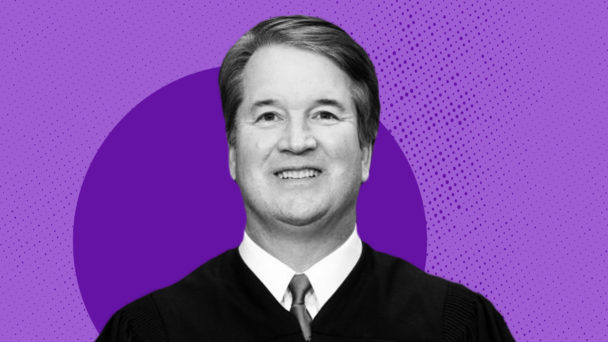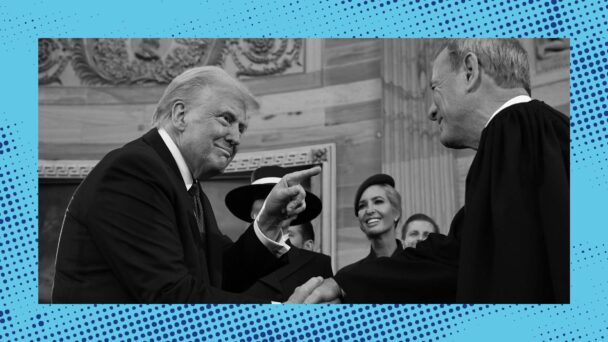Surprising absolutely no one, the Supreme Court’s decision in Glacier Northwest v. International Brotherhood of Teamsters Local Union 174, issued Thursday, was yet another win for corporations and a loss for workers and their right to collective action more broadly. In an opinion by Justice Amy Coney Barrett, the Court held that Glacier Northwest, a concrete company, could sue its employees’ union in state court for its loss of perishable concrete stemming from an employees’ strike, even though the National Labor Relations Act (NLRA) has enshrined employees’ right to strike since 1935. The Court held that the workers’ decision to strike after concrete had been mixed and poured into trucks meant that they failed to take “reasonable precautions” to avoid foreseeable, aggravated, and imminent harm to their employer’s property, because wet cement hardens and becomes unusable, and could have (although it did not) damaged the employer’s trucks.
This meant, the Court said, that the strike was not even “arguably protected” by the NLRA, and thus the union could be hauled into state court and held liable over the wasted concrete. “All agree that the NLRA protects the right to strike but that this right is not absolute,” Barrett wrote. She was joined in whole or in part by all the justices except Justice Ketanji Brown Jackson, who dissented alone. (More on her dissent later on.)
As other commentators have noted, the decision could have been worse, in that the ruling didn’t unsettle any decades-old precedents, but rather applied existing law to the, ahem, concrete facts of this case. The “not as bad as it could have been” factor probably explains why Justices Elena Kagan and Sonia Sotomayor joined Barrett’s rather brief opinion, which was rounded out by Chief Justice John Roberts and Brett Kavanaugh. This odd, five-justice alliance may have prevented Justices Clarence Thomas, Samuel Alito, and Neil Gorsuch—who concurred only in the bottom-line that Glacier Northwest should win—from constructing a majority that would have eroded the right to strike even further. (For starters: Thomas’s separate opinion explicitly invites a challenge to the 1959 precedent that made clear the National Labor Relations Board, and not the states or courts, is the main arbiter of what’s protected or prohibited conduct under federal labor law.)
But “it could have been worse” is getting to be a tiresome refrain for us Supreme Court doomsayers. In this case, as in many others, breathing a sigh of relief that things could’ve been worse obscures just how bad the Court’s decisions actually are. It also acclimates the public to a Supreme Court that is constantly whittling away at peoples’ rights and increasing the power of corporations and the wealthy, rather than doing what it should do: enforcing the rights that the people, through their elected representatives in Congress, have recognized through legislation. In this case, that legislation is the NLRA.
To see the true colors of Thursday’s decision, consider this absurd counterfactual: Imagine the outcome in Glacier Northwest had the parties been flipped—and the Supreme Court had held that an employer’s otherwise legally protected economic action against its employees was actually not protected because the employer was not sufficiently careful to avoid harm to the workers.
In this up-is-down hypothetical, the employer locked out its workers, which the law allows under certain circumstances, and the workers sued for the resulting economic harms from the lockout: lapsed insurance leading to huge healthcare costs, credit card interest charges, and evictions. Imagine this Court agreeing with the workers that the employer’s decision to begin the lockout near the end of a month, and without warning, showed it had not taken “reasonable precautions” to protect workers, because it was foreseeable that workers would be without a paycheck when rent was due, and they’d lose their health insurance almost immediately. “All agree that employers have a right to lock out employees, but this right is not absolute,” Alternate Reality Barrett might have written.
This parallel universe is unimaginable because we’re so accustomed to a Supreme Court that consistently sides with business interests and the wealthy and powerful that there’s no room in our imagination for better alternatives. Even relatively “not bad” decisions are immensely slanted against regular people, in ways that are so commonplace as to seem unremarkable.
Yet Glacier Northwest’s seeming unremarkableness, in the real world, will be anything but. The decision, to be clear, will not mean the end of strikes because workers understand that collective action is the most effective way to improve their jobs and communities. But, as we’ve seen in other contexts, the threat of litigation may constrain the options, weaken the bargaining power, and possibly depress the wages of workers in the future—and it will certainly cost unions money in defending against employer lawsuits.

(Photo by Jabin Botsford/The Washington Post via Getty Images)
The chilling effect and costs will be real. The ruling’s murky holding will embolden employers to sue when their employees strike and some employees may think twice before striking.
Think of a group of bakery workers who have formed a union and are trying to bargain with their employer for better wages, benefits, and working conditions. Their employer is not budging, so they want to strike. They want to start their strike during the 7 to 9 a.m. morning rush, because they know that shutting down the bakery during a high-sales period will be more effective at convincing their employer to come to the bargaining table. There will also be a group of workers on duty who can walk out, drawing public attention to the strike. Of course, they don’t want to notify their employer ahead of time, so the bakery can’t find replacements for them or plant negative stories in the media.
But Glacier Northwest may make them hesitate. The workers will have to wrestle with whether the bakery might sue them for the loss of perishable food products, or lost sales, if they strike during peak hours, when pastries and donuts are fresh out the oven. In the ruling, Barrett emphasized that the cement workers “prompted the creation” of the perishable concrete by not striking until it was mixed; would the same reasoning apply to dough and frosting? The best reading of Glacier Northwest is that it turns on the risk to property, not just perishable products. But what if the bakery argued that striking workers who left food in the kitchen without cleaning up similarly failed to take reasonable precautions to protect the employer’s property from mold or pests?
If workers who handle perishable products are risk-averse, or live in a place where state-court judges are hostile to unions, they may decide not to strike. Or, to minimize the chances of a costly lawsuit, they may start their strike before or after business hours, or give their employer notice—even though, as the Court acknowledged Thursday, the NLRA does not require workers to do that. Or workers may decide to mount a strong strike, but an employer lawsuit may cost their union millions of dollars to defend. The result will be that the workers may be less effective at convincing their employer to make concessions at the bargaining table. They may be less able to successfully negotiate better pay, benefits, and working conditions.
If this occurs, the impact will not just be on the workers at a single organized workplace. Strong union contracts often push non-union employers in the same industry or geography to raise their standards, too. When unionized workers can’t bargain for better wages, that “spillover effect” is missing, depressing wages for everyone.
Justice Jackson was the only one to dissent in Glacier Northwest. Her dissent is far longer than the majority opinion, consisting of more than 20 pages of careful explanation of the history and significance of the right to strike, and how the majority decision gets the law wrong by taking it upon itself to apply “a series of fact-intensive [NLRB] decisions to the bare allegations in Glacier’s state-court complaint”—rather than leaving the matter to the labor board to decide. Her two-sentence summation of the case made the stakes clear: “Workers are not indentured servants, bound to continue laboring until any planned work stoppage would be as painless as possible for their master. They are employees whose collective and peaceful decision to withhold their labor is protected by the NLRA even if economic injury results.”
Even if economic injury results. Indeed, strikes are always meant to impact an employer’s bottom line, no matter if the employer deals in concrete, newspapers, or online wares. The historic levels of support for unions, high-profile organizing successes, and strikes in the United States over the last several years indicate that many workers agree. The only one oblivious to this reality is the Supreme Court.




